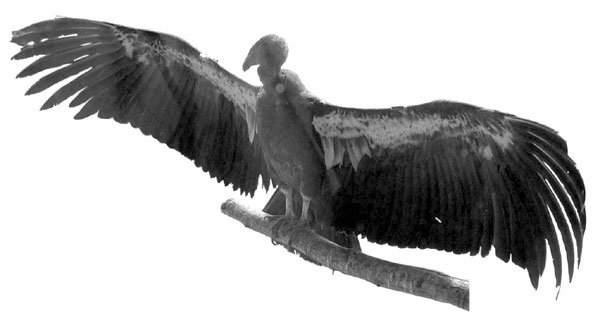You’ve likely heard of the California condor. Maybe you’re even
aware of the California clapper rail or the Metcalf Canyon
jewelflower.
Chances are you’ve never seen any of them. And chances aren’t
good that you ever will.
Those three are just a few of the species in danger of
extinction in the South Valley area.
You’ve likely heard of the California condor. Maybe you’re even aware of the California clapper rail or the Metcalf Canyon jewelflower.
Chances are you’ve never seen any of them. And chances aren’t good that you ever will.
Those three are just a few of the species in danger of extinction in the South Valley area.
According to the U.S. Fish and Wildlife Service, there are 18 endangered species in Santa Clara County alone. The service has no species listed for San Benito County on its Web site, though the habitats of endangered species of Santa Clara and Monterey counties undoubtedly extend into San Benito.
The Endangered Species Act gives the U.S. Fish and Wildlife Service the power to list a plant or animal species as “endangered,” “threatened” or as a “species of concern,” which then allows it to enact rules to protect the species. The list encompasses everything from invertebrates to mammals.
Congress first passed the Endangered Species Preservation Act in 1966, but only provided a limited means of protecting species. In 1969, the legislature passed the Endangered Species Conservation Act, which provided additional protection to species. And in 1973, it passed the Endangered Species Act, shoring up the provisions of the preceding acts, and breaking some new ground in species protection.
For a species to be “endangered,” it essentially means that a species is on the brink of extinction. The California condor is a good example. The giant bird was listed as endangered in 1970, after years of being shot and poisoned. By 1987, there were only 27 birds left, and that year, the last of the wild condors were taken into captivity to start a breeding program to replenish their numbers. The numbers have increased, and those born in captivity are released into the wild from time to time, to see if they can find a mate and reproduce. Still, the population of condors is low, and they remain on the endangered species list.
There are also numerous species listed as “threatened.” That means there are serious threats to the species that may lead to their extinction, but the situation isn’t critical – yet. Santa Clara County has 13 threatened species.
For a species to make the list, the process usually starts when a group petitions the Fish and Wildlife Service to have a species listed. Within a year, the service must decide if listing the species is warranted. If it decides it is, the service accepts comment from the public on the proposed listing, and then decides whether to list. The decision to list is to be based solely on scientific grounds and not for political or economic reasons.
If a species gets listed as “endangered” or “threatened” under the Endangered Species Act, it becomes a crime to harm or harass it in any way, capture or collect it, or to kill it. It also means people cannot trade or transport the species, and that the Fish and Wildlife Service must, in most cases, designate what is known as “critical habitat.” That means the service must say what areas are essential to the conservation of the species. If an area is designated as critical habitat, federal agencies that want to develop the land, or do anything else to it, must not take any actions that would result in habitat destruction. That doesn’t apply to city, county, state or private land, unless the property owner needs a federal permit or federal funding for a project.
After making the list, a species’ status is reviewed every five years. Species that have recovered significantly from their original status can be delisted.
The List
Federal endangered and threatened species* in Santa Clara County:
Invertebrates Vernal pool fairy shrimp (T), bay checkerspot butterfly (T)
Fish Tidewater goby (E), delta smelt (T), coho salmon – central CA coast (T), Central California Coastal steelhead (T), South Central California steelhead (T), Central Valley spring-run chinook salmon (T), winter-run chinook salmon (E)
Amphibians California tiger salamander (T), California red-legged frog (T)
Reptiles Alameda whipsnake (T), San Francisco garter snake (E)
Birds Marbled murrelet (T), Western snowy plover (T), bald eagle (T), California brown pelican (E), California clapper rail (E), California least tern (E), Least Bell’s vireo (E)
Mammals Salt marsh harvest mouse (E), riparian brush rabbit (E), San Joaquin kit fox (E)
Plants Tiburon paintbrush (E), Coyote ceanothus (E), robust spineflower (E), Santa Clara Valley dudleya (E), Contra Costa goldfields (E), Metcalf Canyon jewelflower (E), California sea blite (E), showy Indian clover (E)
Species with critical habitat proposed or designated in Santa Clara County
Alameda whipsnake (T), bay checkerspot butterfly (T), California tiger salamander – Central Valley population (proposed), California red-legged frog (Proposed)
*(E) = endangered; (T) = threatened













